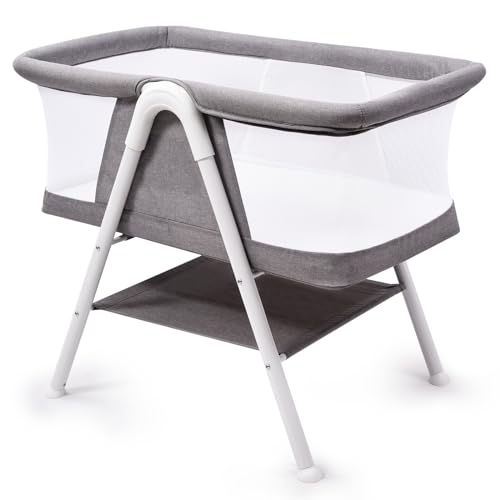15 Great Documentaries About Baby Cot To Bed

Transitioning from Baby Cot to Bed: A Comprehensive Guide for Parents
The journey from a baby cot to a bed marks a significant turning point in a kid's development. It represents independence and an action toward growing up. Nevertheless, this transition can typically be daunting for both parents and children. Comprehending the procedure, the right timing, and how to make the shift smoother can significantly assist in this journey. This post checks out the necessary to consider when transitioning your kid from a cot to a bed, consisting of common FAQs, ideas, and a structured plan to guarantee the procedure is as seamless as possible.
Why Transition from a Cot to a Bed?
Developmental Milestones
Transitioning to a bed is usually prompted by a number of elements:
- Physical Growth: As kids grow, they outgrow their cots. The average size for a convertible cot is typically suggested for babies as much as 3 or 4 years old.
- Cognitive Development: As young children end up being more curious and familiar with their surroundings, they may try to climb out of their cots, positioning security risks.
- Potty Training: Once a child is potty trained, they might require easier access to the bathroom, which a bed can facilitate.
- Brother or sisters: The arrival of a new brother or sister can also demand this transition, as the cot may need to be released up.
When to Make the Transition
There is no one-size-fits-all response to when a child need to transition from a cot to a bed. Nevertheless, here are some indications that it might be time:
- Climbing Out: If the kid is trying to climb up out frequently.
- Age Consideration: Many professionals suggest this transition around the age of 2 to 3 years, although every kid is unique.
- Need for Independence: Children may reveal a desire for a big-kid bed.
Kinds Of Beds Suitable for Toddlers
Not all beds are developed equal when it concerns young children. Here's a breakdown of appropriate bed types:
| Bed Type | Description | Pros | Cons |
|---|---|---|---|
| Young child Bed | Smaller sized, lower to the ground, frequently with side rails. | Size-appropriate for toddlers; stability. | Minimal lifespan as they outgrow rapidly. |
| Single Bed | Requirement size bed suggested for older kids. | Lasts longer; can be utilized for several years. | Might be too big for a toddler; risk of falling. |
| Convertible Crib | Crib that changes into a toddler bed. | Versatile; saves money in the long run. | Can be pricey; some may not offer full-sized alternatives. |
| Loft Bed | Raised bed with area underneath for play or storage. | Makes the most of space; enjoyable for kids. | Not suitable for very young kids; security issues. |
Actions to Transition Smoothly
Transitioning to a bed can be made easier with mindful preparation. Here's a step-by-step guide:
1. Prepare the Space
- Select a Location: Decide where the bed will be put.
- Childproof the Room: Since kids are naturally curious, make sure that furniture is stable, sharp edges are covered, and harmful products are out of reach.
- Keep Familiar Items: Retain preferred toys and bedding to offer comfort in the new environment.
2. Present the Bed
- Include Your Child: Let your kid assistance select out their bed or bedding to create enjoyment.
- Describe the Transition: Make them understand that they are becoming a big kid by having a big-kid bed. Usage motivating language.
3. Make the Swap
- Bedtime Routine: Keep the bedtime regular constant. Cots On Sale develops familiarity and comfort throughout the shift.
- Assistance: Offer them reassurance however prevent being excessively protective; it's crucial to motivate independence.
4. Address Fears and Concerns
- Discuss Fears: Children might have fears of falling or the dark; talk about these openly.
- Strengthen Safety: Use guard rails on the bed initially and explain what to expect throughout the night.
5. Monitor and Adapt
- Be Patient: It might take some time for your child to adjust completely.
- Stay Consistent: Maintain the nighttime regimen, even when difficulties emerge.
Frequently Asked Questions Regarding Transitioning from Cot to Bed
Q1: How long does the transition from a cot to a bed typically take?
A1: The shift can differ substantially among children-- varying from a few days to a few weeks-- as they adapt to sleeping in a brand-new area.
Q2: Should I buy an unique young child bed?
A2: Investing in a young child bed can make the transition much easier because they are developed with safety in mind; nevertheless, if you choose to go straight to a single bed, that can work too with the ideal security measures.
Q3: What if my child keeps getting out of bed?
A3: This is regular! Motivate them to remain in bed and establish positive reinforcement by rewarding them for remaining in bed through the night.
Q4: Is it all right to transition to a big bed too early?
A4: Transitioning too early can lead to sleep interruptions. It's vital to evaluate the preparedness of the child based upon their indications and development.
Transitioning from a baby cot to a bed is a significant step for both kids and moms and dads. With thoughtful preparation and understanding of the child's requirements, moms and dads can make the shift smoother and more enjoyable. By recognizing when to make the transition, comprehending the types of beds available, and keeping a constant regimen, parents can minimize worries and cultivate a complacency for their kid throughout this exciting brand-new chapter. Eventually, every child is different, and patience is essential in making this journey a favorable experience.

